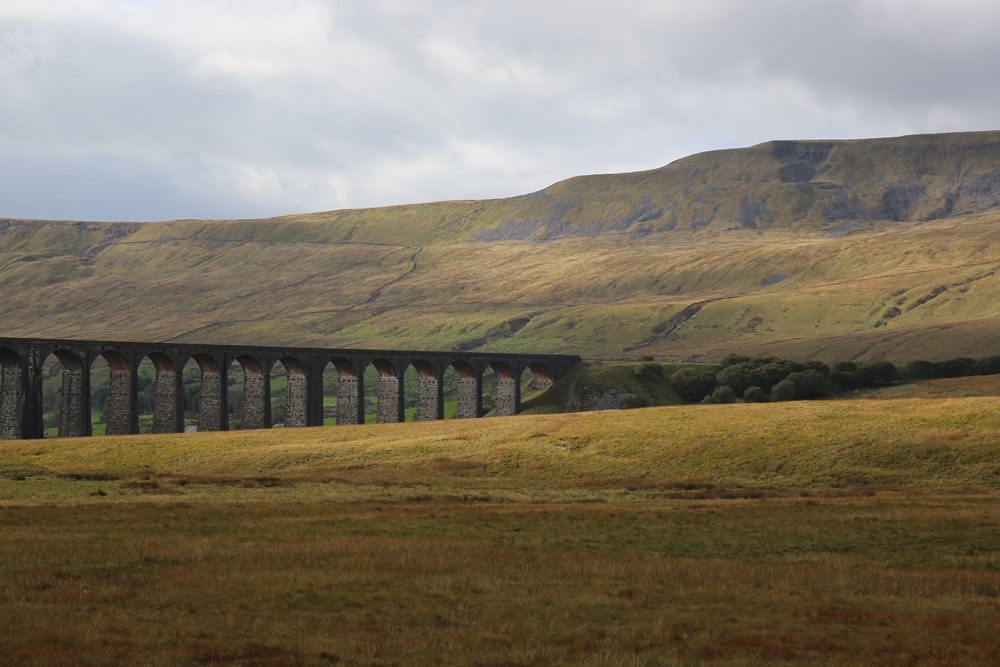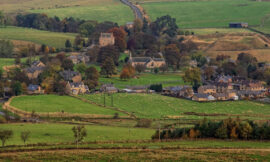Ribblehead Viaduct, an engineering marvel nestled amidst the breathtaking landscapes of the Yorkshire Dales National Park, stands as a testament to the ingenuity, skill, and perseverance of Victorian-era railway builders. Located near the village of Ingleton, in North Yorkshire, England, this iconic structure spans the windswept moors of Ribblesdale, carrying the famous Settle-Carlisle Railway across the rugged terrain with grace and grandeur.
Constructed between 1870 and 1875 as part of the ambitious Midland Railway’s line between Settle and Carlisle, Ribblehead Viaduct was designed by the eminent engineer John Sydney Crossley. The viaduct, also known as Batty Moss Viaduct, stretches an impressive 400 meters in length and stands at a towering height of 32 meters, comprising 24 magnificent stone arches that span the valley below.
The construction of Ribblehead Viaduct was a monumental undertaking, employing hundreds of skilled laborers who worked tirelessly to carve through the unforgiving terrain and lay the foundations for this engineering masterpiece. The viaduct was built using over 1.5 million bricks and an estimated 200,000 cubic feet of limestone, all of which had to be transported to the remote construction site by rail and horse-drawn cart.
Despite the formidable challenges posed by the harsh Yorkshire weather and treacherous terrain, the viaduct was completed on schedule and opened to traffic in 1876, marking a triumph of Victorian engineering and a testament to the determination and resourcefulness of those who built it.
Today, Ribblehead Viaduct stands as an enduring symbol of the Victorian railway age, attracting visitors from around the world who come to marvel at its majestic beauty and historic significance. The viaduct’s striking silhouette, set against the backdrop of the rugged moorland and towering peaks of the Yorkshire Dales, makes it a popular subject for photographers and artists seeking to capture the essence of this iconic structure.
For railway enthusiasts, Ribblehead Viaduct holds a special fascination, offering a glimpse into the golden age of steam travel and the pioneering spirit of Victorian-era engineering. The viaduct is still in use today, carrying passenger and freight trains along the scenic Settle-Carlisle Railway, providing a thrilling experience for travelers as they traverse the breathtaking landscapes of the Yorkshire Dales.
In addition to its historic significance and engineering prowess, Ribblehead Viaduct is also surrounded by a wealth of natural beauty and outdoor attractions, making it a popular destination for hikers, cyclists, and nature lovers. The viaduct lies at the heart of the Yorkshire Dales Three Peaks area, with the towering peaks of Pen-y-ghent, Whernside, and Ingleborough offering spectacular hiking opportunities for those seeking adventure and exploration.
Visitors to Ribblehead Viaduct can also explore the nearby Ribblehead Station, a historic railway station that once served as a vital lifeline for the remote communities of Ribblesdale. Today, the station has been lovingly restored and preserved as a heritage site, offering visitors a fascinating glimpse into the heyday of Victorian rail travel through interactive exhibits, displays, and guided tours.
In conclusion, Ribblehead Viaduct is a true architectural gem and a testament to the enduring legacy of Victorian-era railway engineering. From its magnificent stone arches and sweeping vistas to its historic significance and cultural importance, the viaduct continues to captivate the imagination of visitors and enthusiasts alike, standing as a timeless symbol of human ingenuity and perseverance amidst the wild beauty of the Yorkshire Dales.



